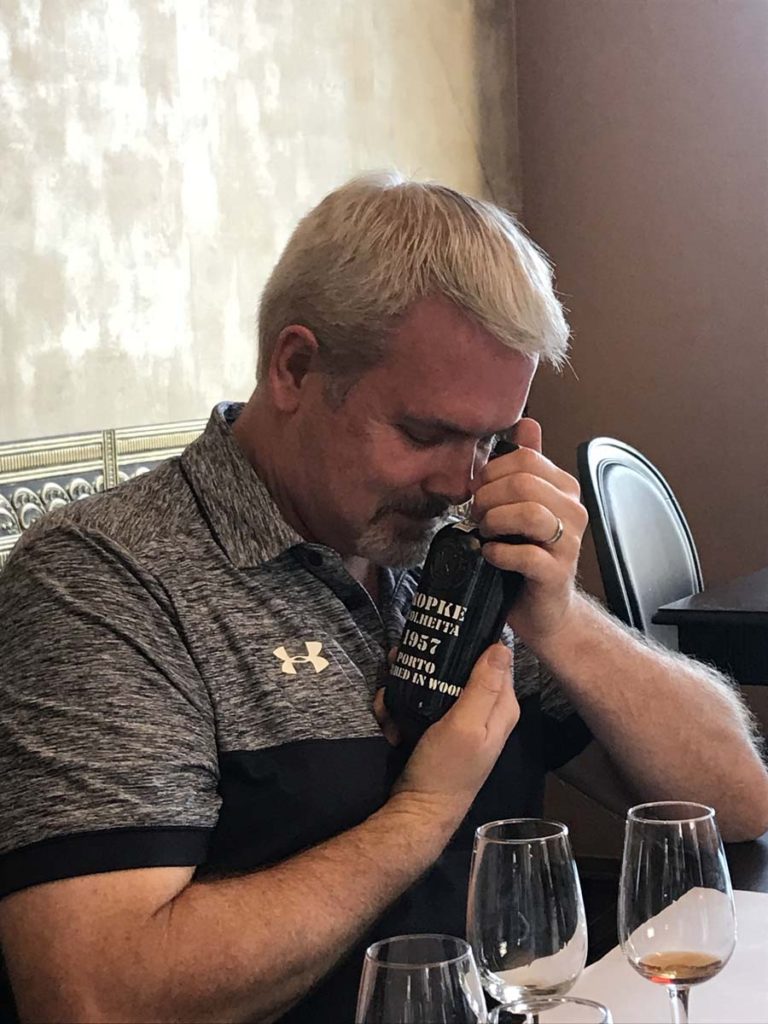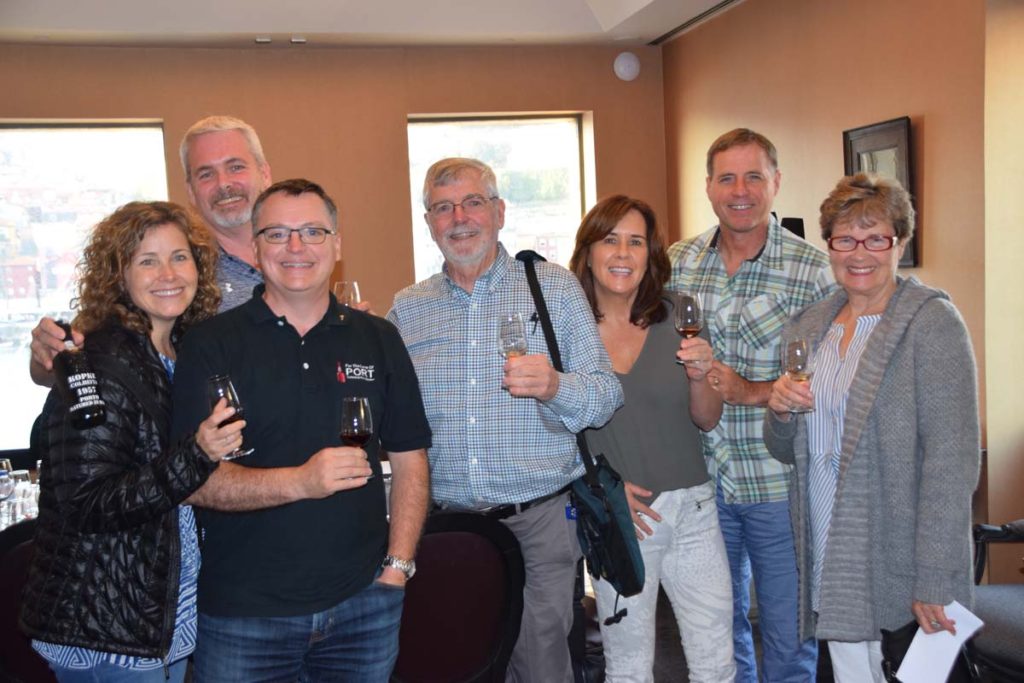Day 4 – Wednesday
After a few lovely days in Lisbon, today we would be saying farewell to the city and taking the three-hour train north to Porto.
Hotel Teatro
When we arrived in Porto, we caught a taxi to our hotel, Hotel Teatro. I’ve stayed at Hotel Teatro a number of times and have always enjoyed the service and the interesting design of this hotel, which is a converted theater.
Hotel Teatro was built on the site of the old 1859 Teatro Baquet. This theater, which burned down in 1888, had been not only a center for theater and performance art but also a gathering place for Porto’s artists.
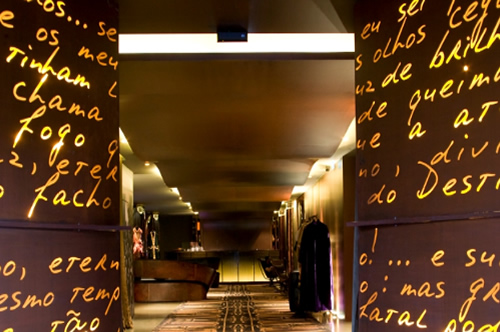
The décor of the hotel is heavy on velvet curtains, dim lighting, and a very cool “theatre” ambiance. (Note: Since our stay, the hotel has been remodeled and “lightened up” significantly. Overall, probably much more appealing to most guests, but a part of me will miss the overt “theatre” interior design).
Shortly after we arrived and got checked into the hotel, the final two guests arrived from the US – our friends Patti and Mike.
We gave them a chance to get checked in and settled into their room, and then the whole group reassembled in the lobby to begin our Porto adventures.
Ramos Pinto Lodge

We piled into a couple of taxis who would take us to our first stop – the Ramos Pinto Lodge across the river from Porto in Vila Nova de Gaia. They welcomed us in and told us that there was a tour about to start if we wanted to join it to get a quick tour of the lodge.
Ramos Pinto was established in 1880 by Adriano Ramo Pinto and his brother. They started making Port in 1917, and acquired several Quintas in the ensuing years. Ramos Pinto is probably best known for its edgy (for the time), iconic Port advertising posters from the 1920s:
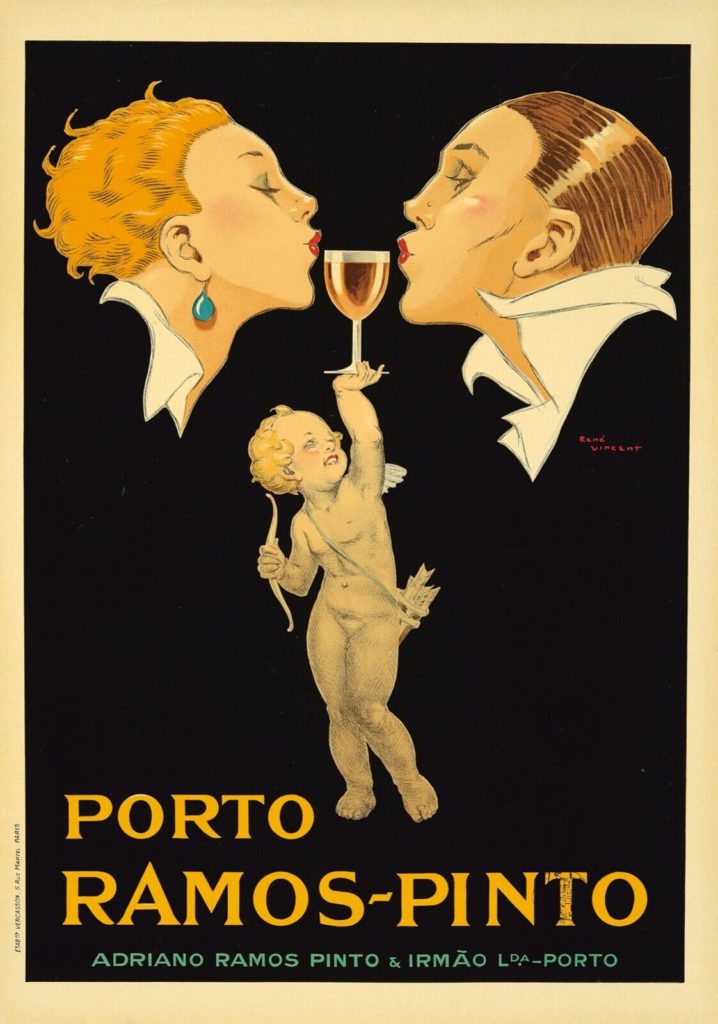
Ramos Pinto Cupid Poster, 1920
We enjoyed the nice tour of the cellars and spent a little time in the museum learning about the history of Ramos Pinto.
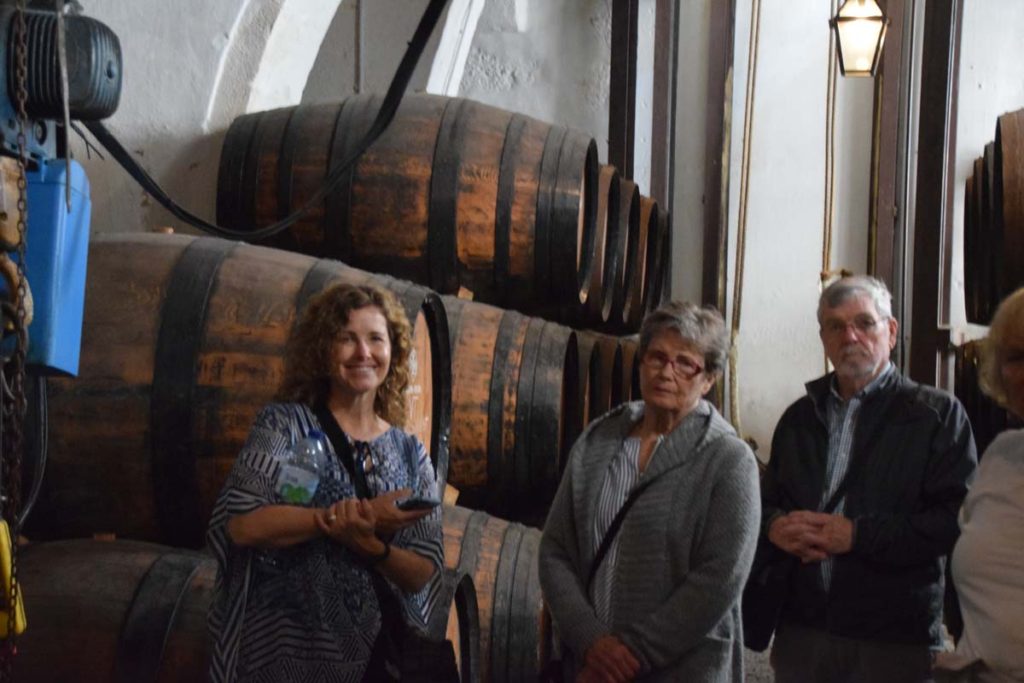
 |
 |
After the tour, we adjourned to the tasting room for a couple of glasses of Ramos Pinto Ports.
Graham’s Lodge
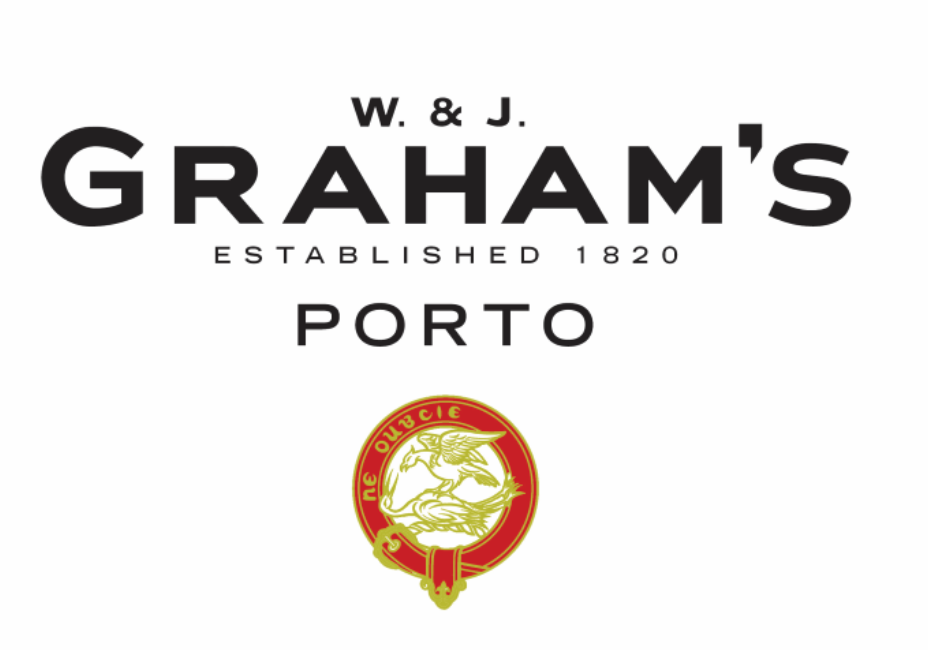
Our next stop was at the Graham’s Lodge.
The Lodge sits high up at the top of a hill and has a commanding view back towards the Luis I Bridge. Porto is on the left side of the photo below, and Vila Nova de Gaia on the right.

Unlike Ramos Pinto, we didn’t take the tour of Graham’s, but rather headed into the Vintage Room for our tasting. The Vintage Room is a beautiful tasting room resplendent with dark wood and lots of brown leather chairs. We all gathered around the table and enjoyed a wide range of mostly Tawny Ports.
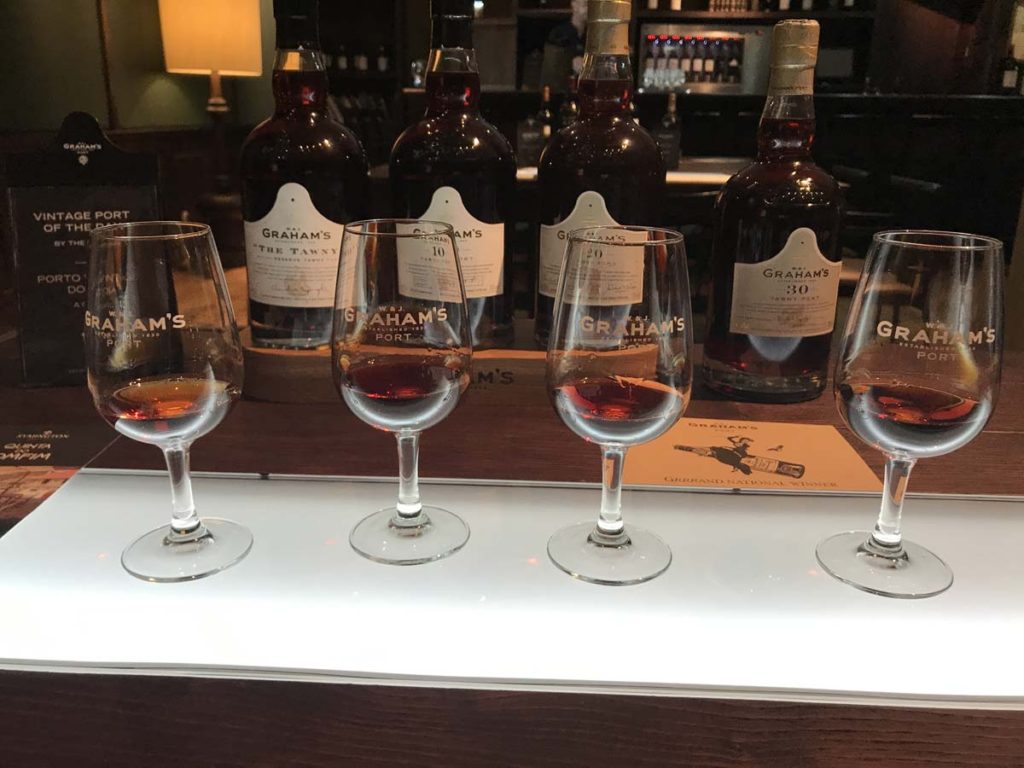
Graham’s “The Tawny” Reserve Port. 7-8 years old. Amber orange in color. Orange spice and caramel on the nose. Rich, full approach with orange and cinnamon on the palate. Very long, lush finish with nice acidity. 90 points. (9/20/2017)
Graham’s 10 Year Old Tawny Port. Cedar and pine resin on the nose with some red fruit notes underneath. Cinnamon and a touch of nice herbal notes on the palate. Great, balanced, long finish. 92 points. (9/20/2017)
Graham’s 20 Year Old Tawny Port. Floral and honey notes on the nose. Reductive palate with honey and spirit. Long, smooth finish. 91 points. (9/20/2017)
Graham’s 30 Year Old Tawny Port. Floral and intense honey notes on the nose. Sexy, reductive palate with honey, caramel, and some light spice. Smooth, very long finish. Just a touch of bitterness on the finish. 93 points. (9/20/2017)
 |
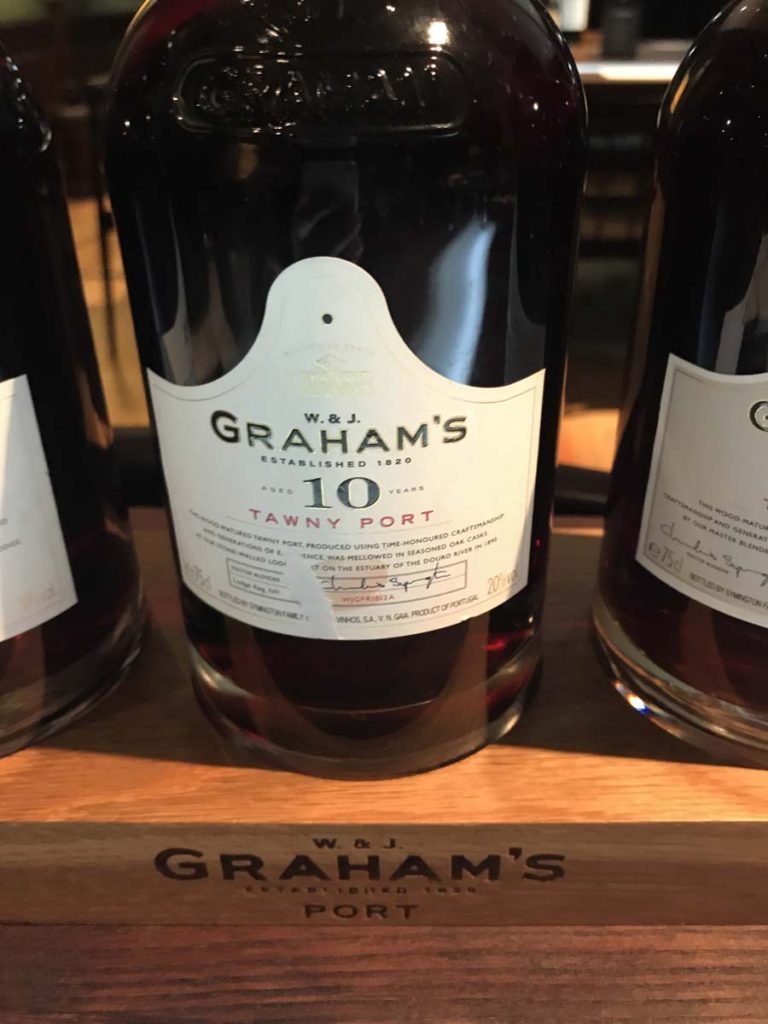 |
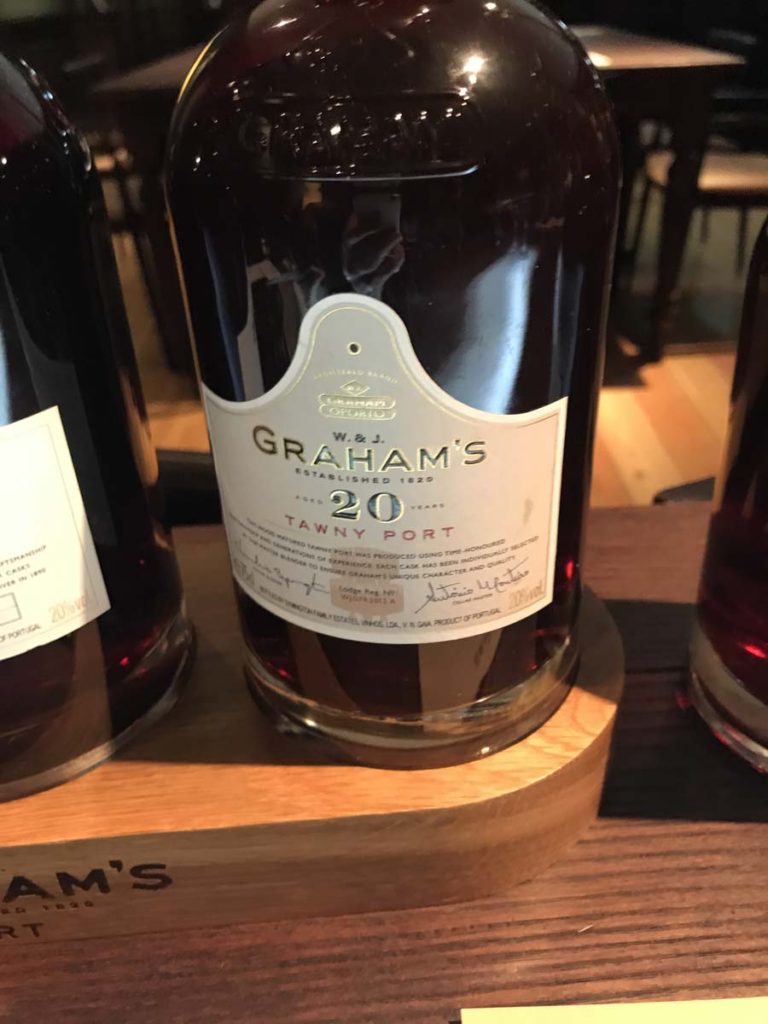 |
 |
1995 Quinta do Vesuvio Vintage Port. Dark ruby in color with purple on the edges. Classic floral notes that I love about Vesuvio VPs. Brooding dark fruit on the palate, with some plum, black cherry, and a touch of anise. Very long, luscious finish. 90 points. (9/20/2017)


Our final tasting for the day was a tasting room that I stop at every time I come to Porto – the Kopke Tasting Room.
Kopke Tasting Room

The Kopke Tasting Room is a three-story building with a shop on the first level and tasting spaces on the second and third levels.
My friend Cristiana always manages to create a great tasting lineup every time I come, and she has an incredible knack for remembering which of their wines I’ve already tasted and goes out of her way to select wines for the lineup that I may not have had recently (or ever).

Kopke 30 Year Old White Port. Petrol, oak, lemon, and citrus on the nose. Rich mouthfeel with lemon and tropical fruits on the palate. A nicely balanced wine that retains its complexity of fruit, tannins, and bright acidity. Suave, long finish. 92 points. (9/20/2017)
Kopke 30 Year Old Tawny Port. Bottled in 2016. Amber yellow in color. Nose of roasted pecans, orange peel, and brown sugar. Lush, rich mouthfeel and great orange spice notes on the palate. A touch of pleasant spice on the long finish. 94 points. (9/20/2017)
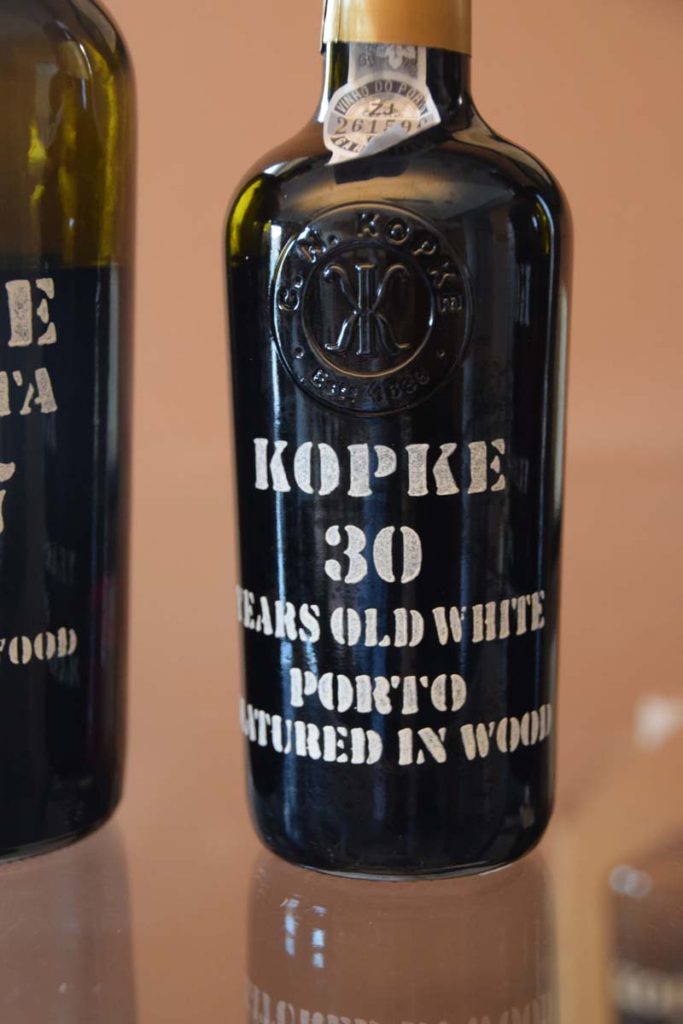 |
 |
2007 Kopke Colheita Port. Cinnamon and red fruit on the nose. Cedar and mahogany on the nose with some subtle caramel notes. Burnt sugar, caramel, and orange spice on the palate. Great balance and acidity on the long finish. 93 points. (9/20/2017)
1981 Kopke Colheita Port. Orange-yellow in color. Subdued nose, but the mouthfeel oozes with orange, honey, and toffee. The tannins are just a touch out of balance on the mid-palate but overall didn’t detract too much from this wine. Great, balanced finish, with the acidity and tannins landing in a really good spot. 93 points. (9/20/2017)
1978 Kopke Colheita Port. Dark amber in color. Some nice strawberry and honey on the nose. Citrus and nutty flavors with great acidity. Medium-bodied, with a touch of alcohol peeking through on the palate. Very long, smooth finish. 91 points. (9/20/2017)
1957 Kopke Colheita Port. Dark amber in color. Butterscotch, caramel, nuts, and a touch of spirit on the nose. Vanilla nougat, caramel, toffee, and honey on the smooth, medium-bodied palate. Amazingly long, unctuous finish. 96 points. (9/20/2017)
 |
 |
 |
 |
2014 Kopke Reserva Douro Red. N/R
